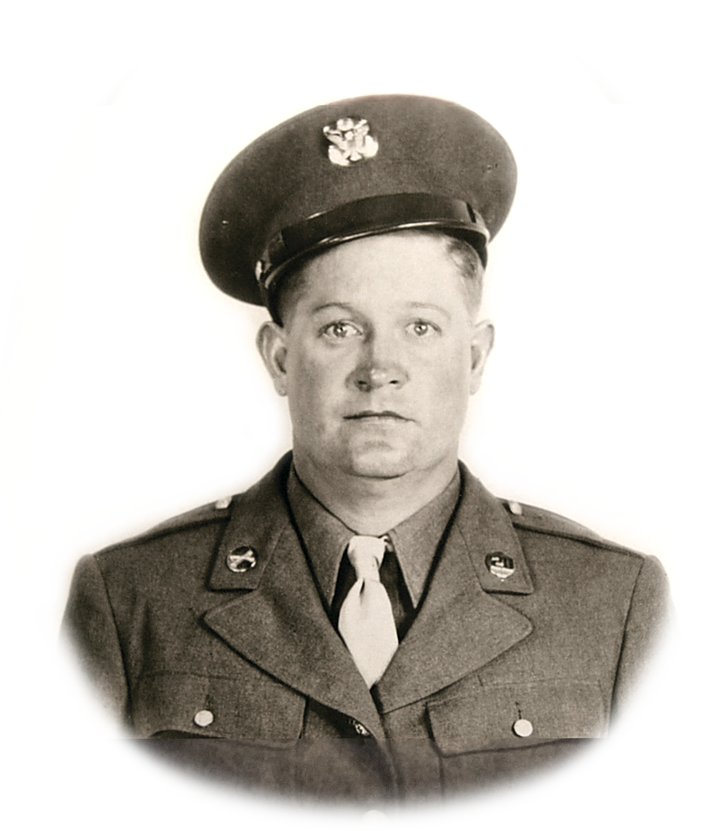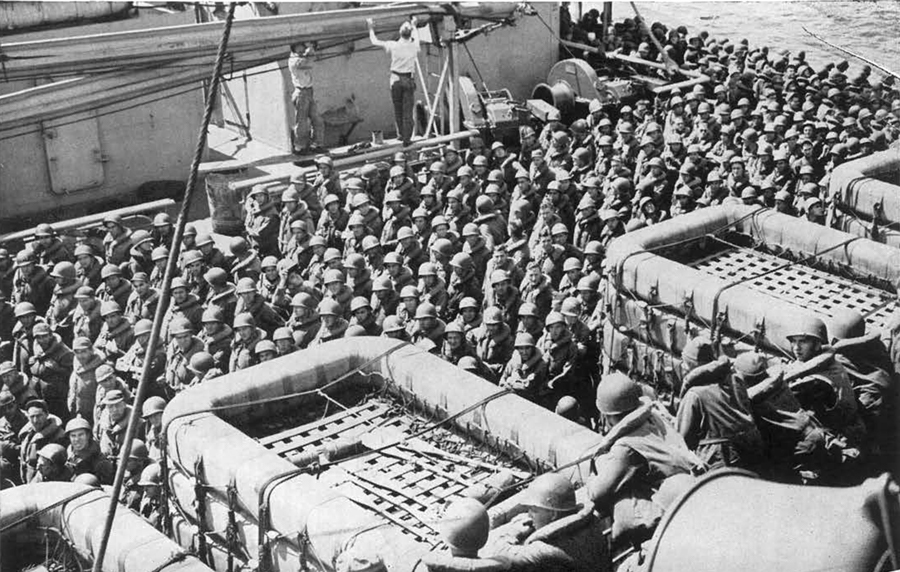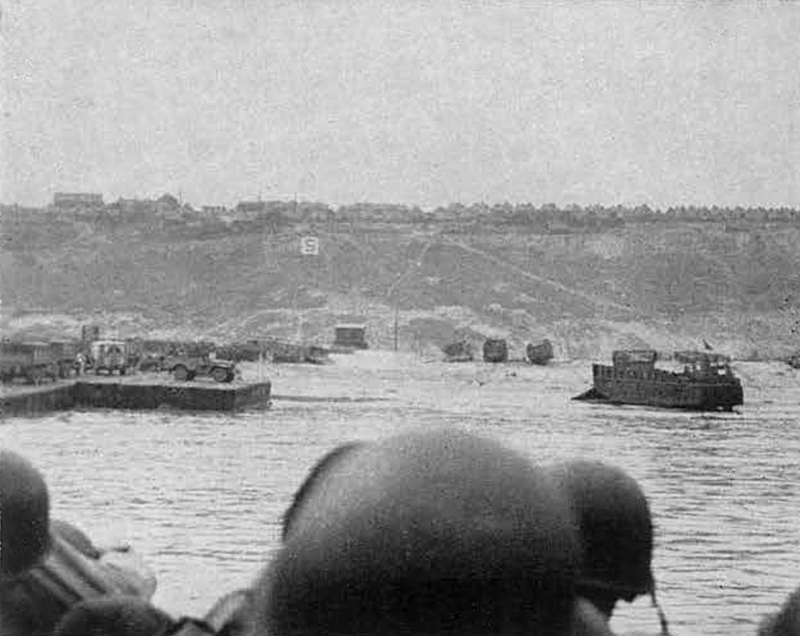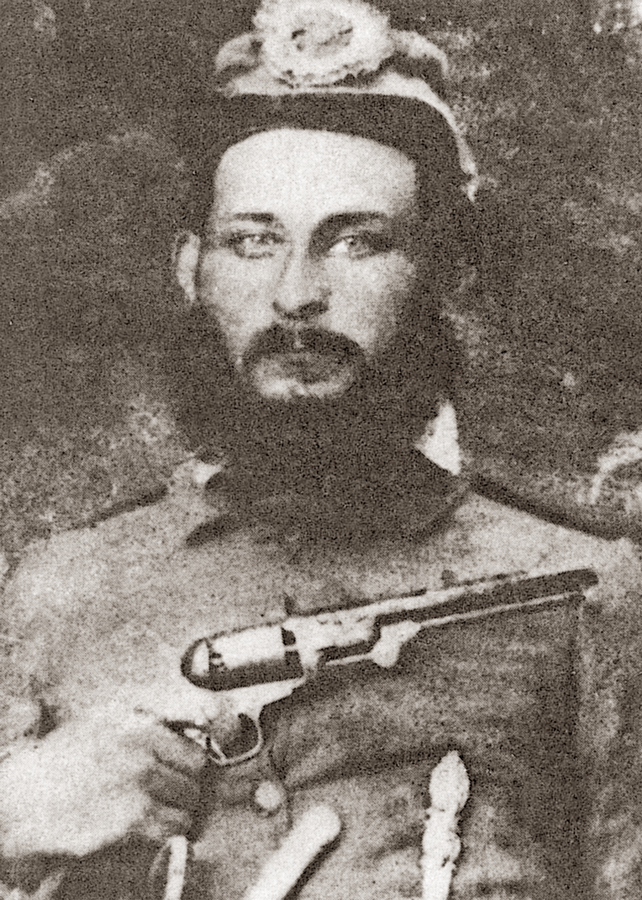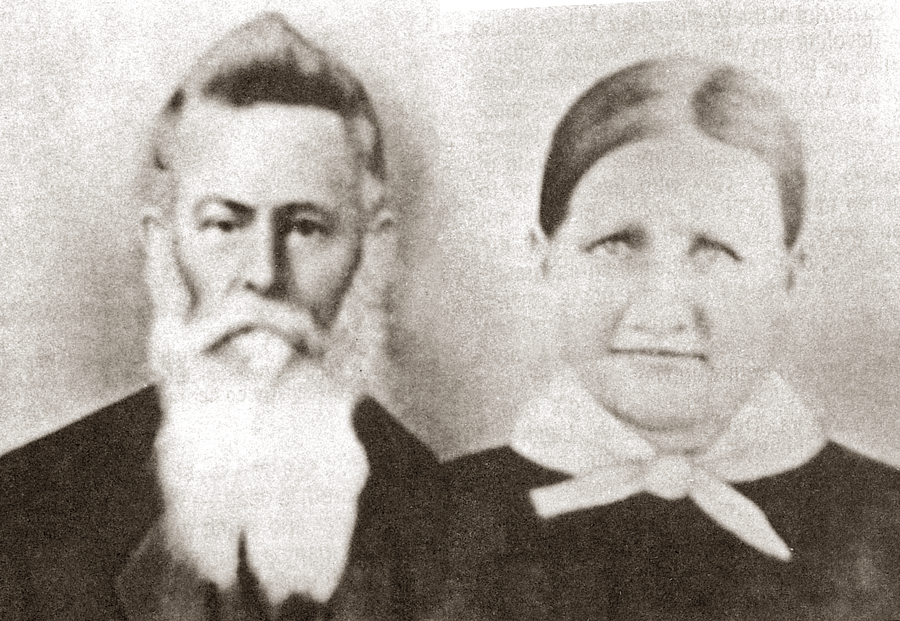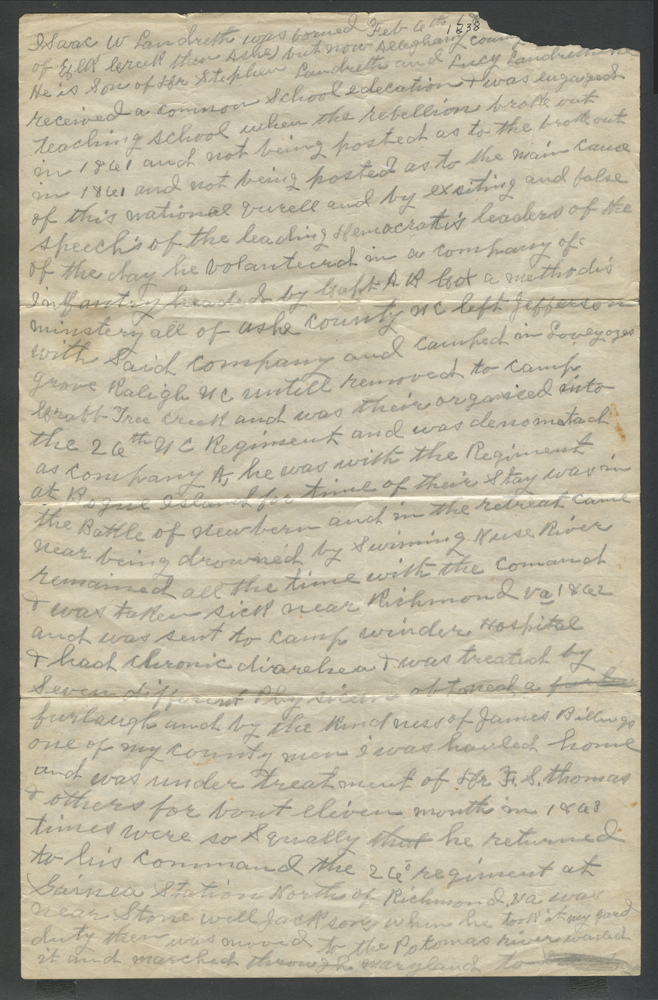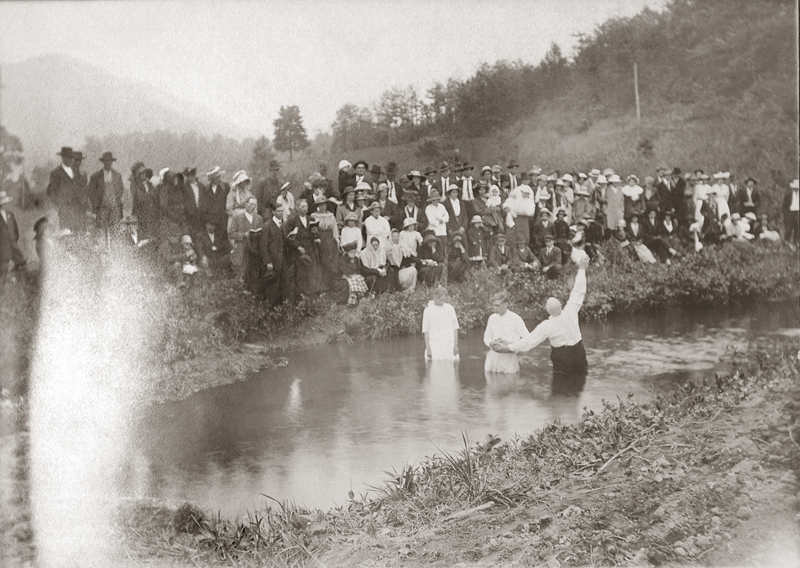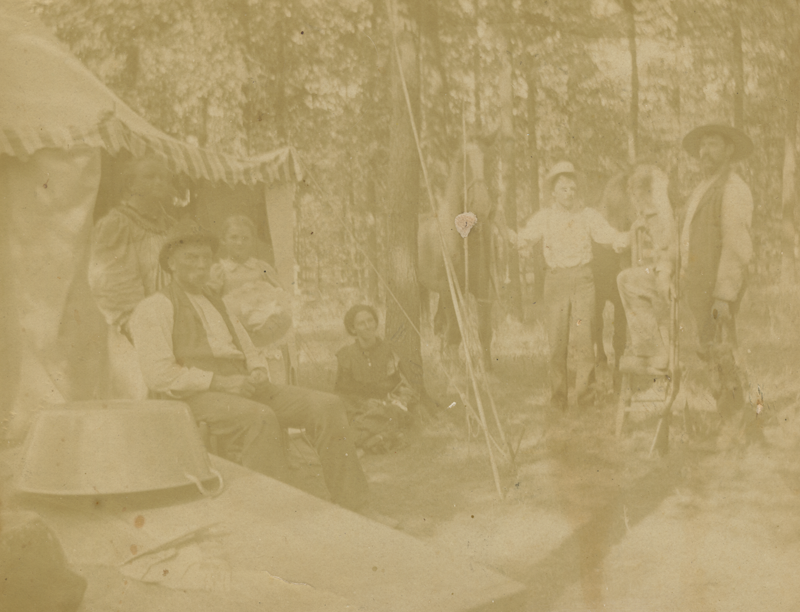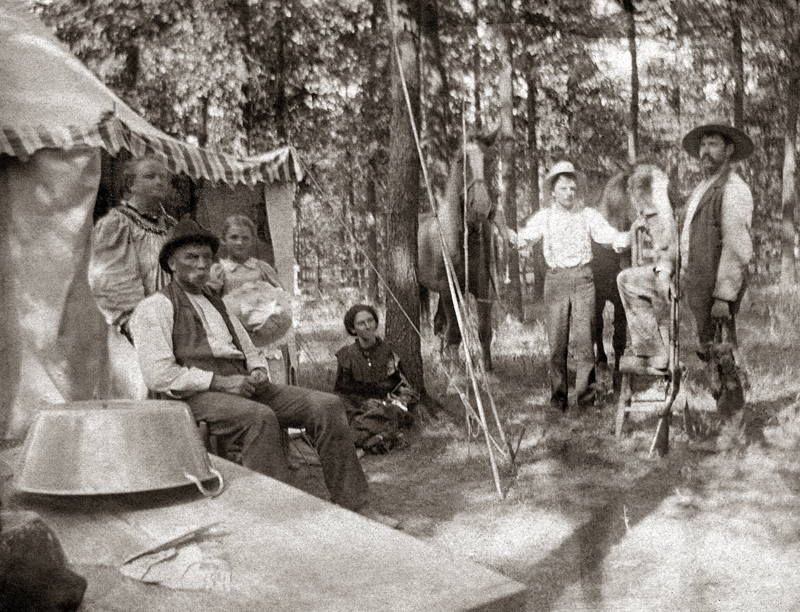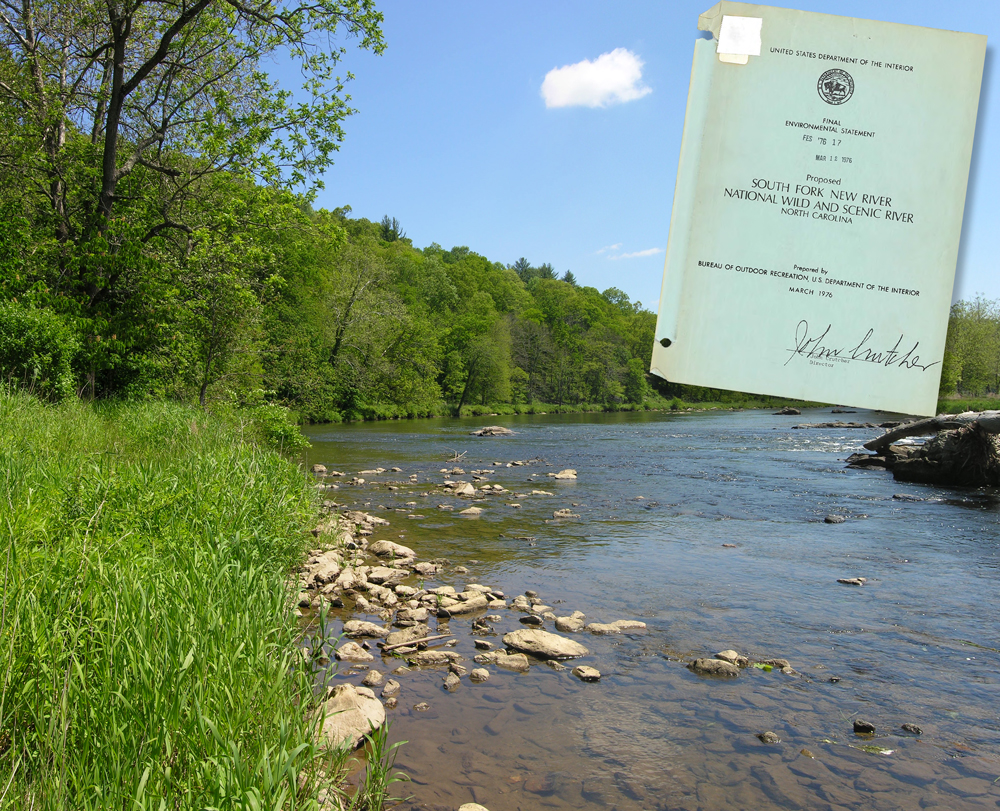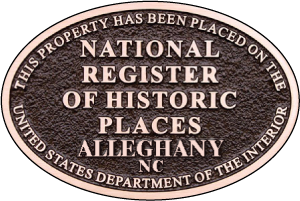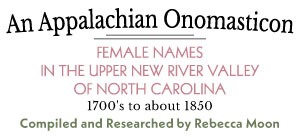For Valentines Day, the story of a couple separated by circumstance:
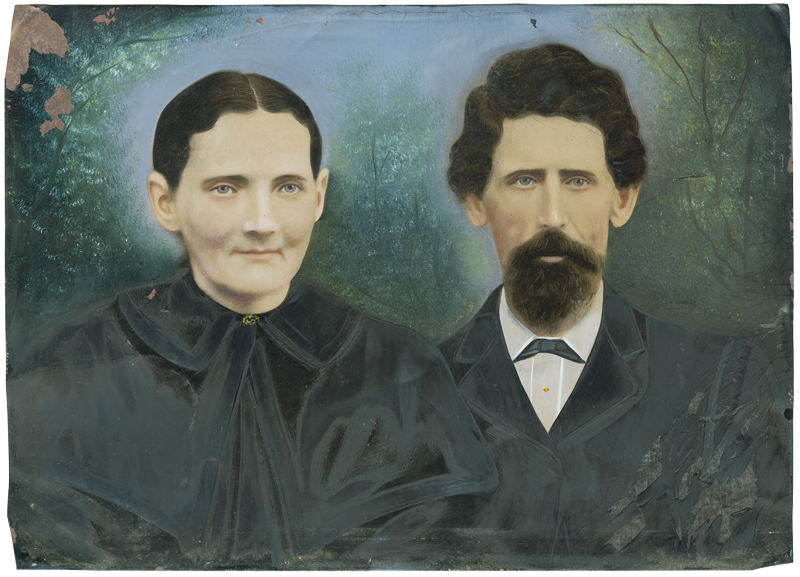
This image is a large, hand-colored colored tintype. Original belongs to Rosamond Joines.
In the 1860 census, 23 year-old, William “Billy” Maines was listed as a “laborer” who lived with the Allen Toliver family at Gap Civil in Alleghany County. 22 year-old, Mary Ann, called “Polly,” was the second of four daughters at the Toliver home, along with Tobitha (25), Paulina (20) and Charity (18).
By 1864, Billy Maines had been made a corporal in Company “I” of the 61st NC Infantry Regiment. He wrote this letter home, to his sweetheart, Polly, from a camp on the Blackwater River, near Ivor Station, in Southampton County, Va. (It’s about 50 miles northeast of Roanoke Rapids, NC.) The 61st was on the way to Petersburg, Virginia, from Morris Island in Charleston Harbor, where Billy had been wounded in August of 1863.
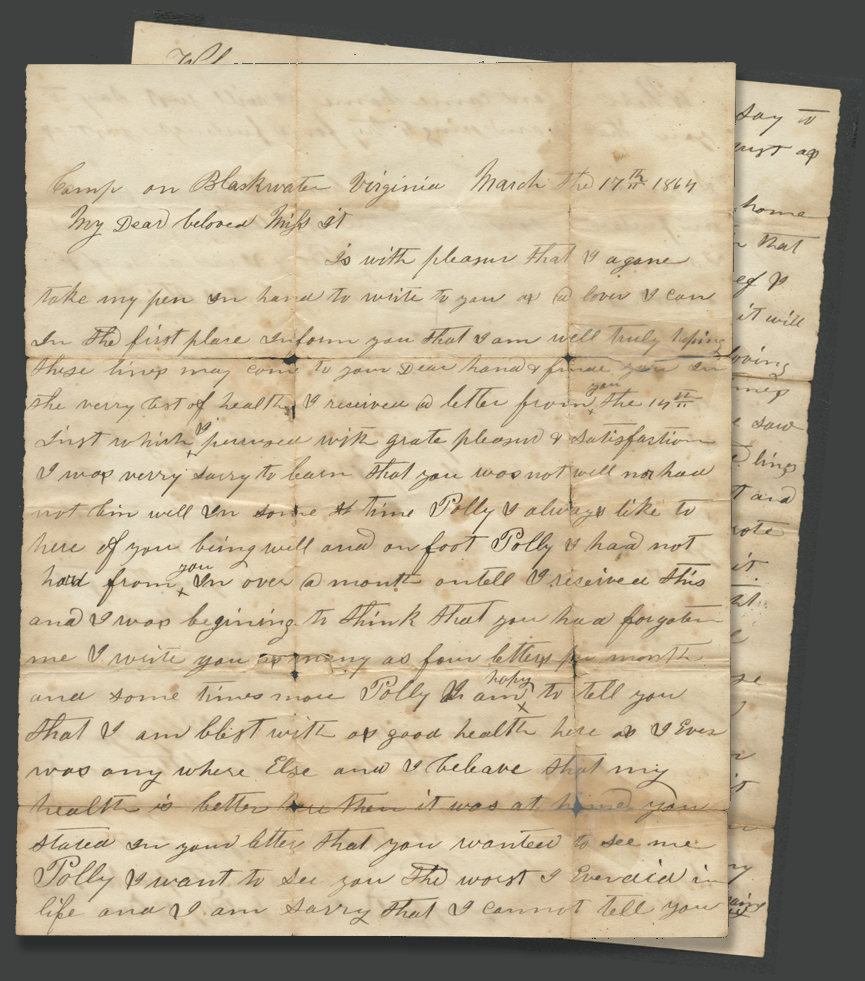
Camp on Blackwater, Virginia
March the 17th 1864
My Dear beloved Miss,
It is with pleasur that I agane take my pen in hand to write to you as a lover. I can, in the first place, inform you that I am well truly hoping these lines may come to your dear hand and find you in the verry best of health. I received a letter from you the l4th inst. [this month] which I perused with grate pleasure & satisfaction.
I was verry sorry to learn that you was not well nor had not bin well in some time. Polly, I always like to here of you being well and on foot. Polly, I had not herd from you in over a month ontell [until] I received this and I was begining to think that you had forgotten me. I write you as many as four letters per month and some times more.
Polly, I am hapy to tell you that I am blest with as good health here as I ever was any where else and I beleave that my health is better here then it was at home. You stated in your letter that you wanted to see me. Polly, I want to see you the worst I ever had in [my] life and I am sorry that I cannot tell you when I can come home.
I will just say to you that I am going to try for a furlough just as soon as those men comes back that is gone home on furlough. You said for me to tell my captain that I wanted to go home and marry. Polly, I will do so if I cannot get to come no other way but I think it will not be long till I will get to come & see you my loving friend. I love you as I do my self. Polly, many times do I think of you and the pleasent hours I have saw at home.
Polly, everything is still along the lines and no prospect of any fight here at present and our rations is about as usual. Polly, I wrote you a letter the 15th of this month & sent it with mother’s letters as you said you thought it would be best. I will send your letters all that way if you say so. Polly, I must close. You must write soon. Direct to Ivar Station, Southhampton Co., Va.
Polly, you must excuse this bad wrote letter as it is a verry cold morning. God Bless you my dear girl. I shall never forget the[e] my love love love love. This is words from my heart to you.
This from Corporal Wm. Maines
To Miss Polly Toliver
Billy survived the war, and on February 2, 1868, Billy and Polly were married.
Mary Ann “Polly” Toliver passed away August 11, 1898. William M. “Billy” Maines died in May of 1902.

